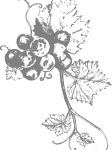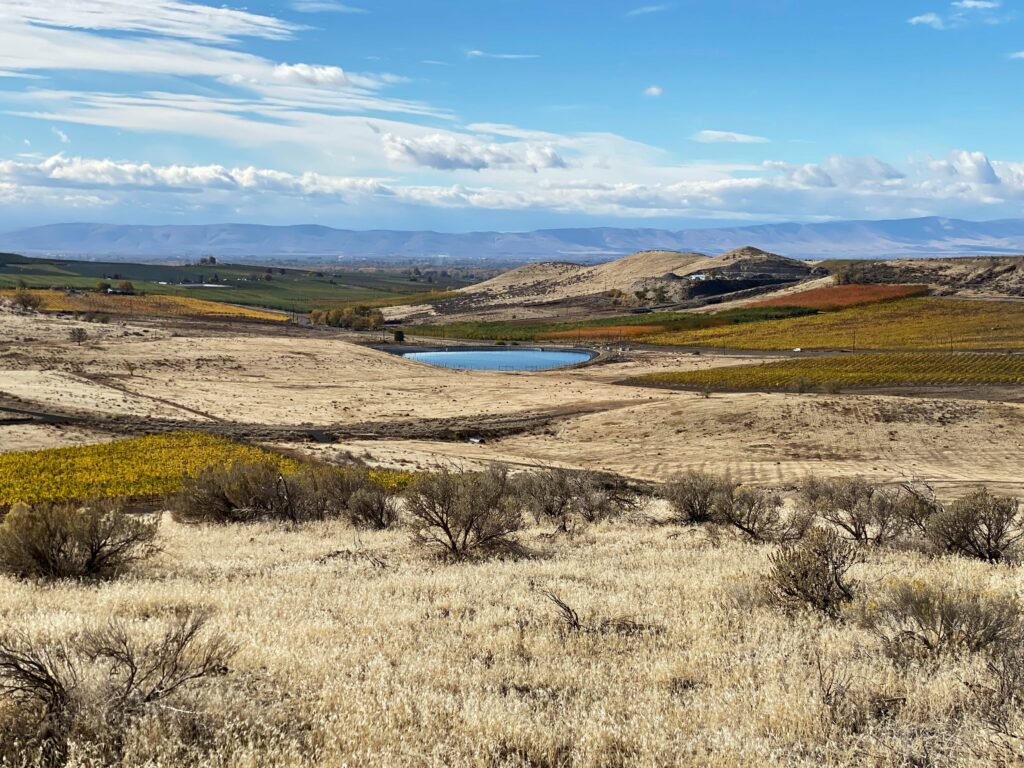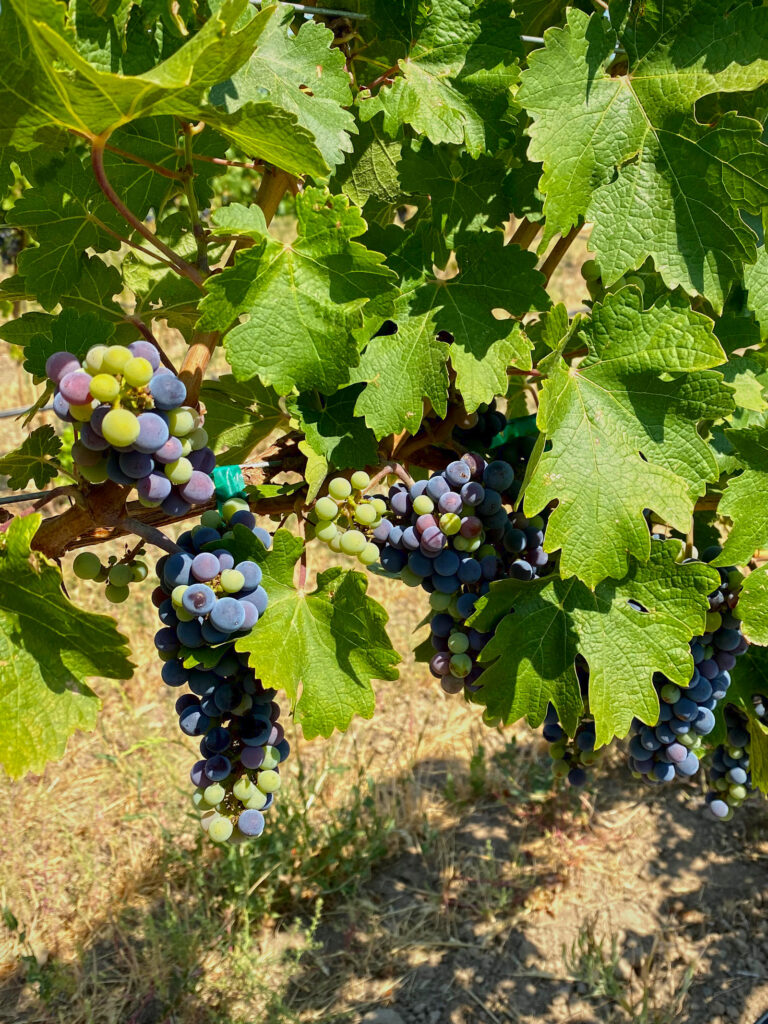Wine is bottled poetry.
~ Robert Louis Stevenson

The Vineyard
Driven by passion … and terroir.
The vineyard was designed to create the best possible growing conditions for the varietals and a pleasing aesthetic for guests and residents. The design follows the natural terroir of the site that is filled with gentle slopes and soils that are primarily sand, silt and loam. The site benefits from abundant day-long sunshine and enjoys a constant breeze that changes direction around noon each day. Being protected in a natural elevated bowl, on the eastside of Konnowac Pass, the site is cooler in the summer and warmer in the winter than vineyards with a lower elevation in the Yakima Valley.
The majority of blocks are planted on southwest-facing slopes. The rows in these blocks run in a northeast to southwest fashion to allow for maximum exposure to the sun. Varietals that respond well to sun and warmth, such as cabernet sauvignon, will be helped by the thoughtful layout.
The varietals that prefer a cooler setting, such as the sauvignon blanc, are planted on east-facing slopes. These rows are planted in an east-west configuration so that the grapes have less exposure to the sun and heat during the day.


When you taste wines from these grapes you see and feel the beauty of the place where it was produced. A wine that captures the quality of the light, of the sun that warms the grapes, of the night breeze that cools the vineyards, that reflects the harmony of the nature that surrounds it today, as it has for centuries.
The use of high-quality water is critical when irrigating wine grapes, especially in high desert conditions. Our grapes are watered with high-quality water from the Ellensburg aquifer.
The vineyard is located on the Western edge of the arid Rattlesnake Hills AVA. And the elevation ranges from a low of 1144 feet to a high of 1297 feet. In addition to the interactive map above, details for each varietal and block are provided below.
Sauvignon Blanc
Acres: 6.61
Sauvignon Blanc
Acres: 6.67
Chardonnay
Acres: 6.47
Chardonnay
Acres: 6.34
Syrah
Acres: 10.99
Syrah
Acres: 7.8
Sangiovese
Acres: 1.1
Sangrantino
Acres: 1.1
Negro Amaro
Acres: 1.13
Nero D'Avola
Acres: 1.08
Malbec
Acres: 4.57
Cab Franc
Acres: 5.06
Carmenere
Acres: 2.25
Barbera
Acres: 2.59
Grenache Noir
Acres: 4.16
Mourvedre
Acres: 5.1
Merlot
Acres: 4.78
Cabernet Sauvignon
Acres: 2.42
Cabernet Sauvignon
Acres: 3.73
Cabernet Sauvignon
Acres: 5.57
Cabernet Sauvignon
Acres: 3.12
Cabernet Sauvignon
Acres: 2.19
Our Varietals
Barbera
Cab Franc
Cabernet Sauvignon
33
33
33
33
33
16
17
18
19
20
1,242 - 1,273
1,238 - 1,247
1,238 - 1,247
1,239 - 1,273
1,239 - 1,297
2019
2019
2019
2019
2019
2.42
3.73
5.57
2.19
3.12
Carmenere
3
11
1,212 - 1,241
2020/21
20/21
2.25
Chardonnay
15
352
2a
2b
1,168 - 1,244
1,187 - 1,263
2019
2019
6.47
6.34
Grenache Noir
1a
13
1,241 - 1,267
2021
4.16
Malbec
9
9
1,202 - 1,215
2019
4.57
Merlot
26
15
1,266 - 1,278
2019
4.78
Mourvedre
4
14
1,241 - 1,267
2019
4.97
Negro Amaro
1
7
1,232 - 1,259
2019
1.13
Nero d'Avola
2.1 CA Certified
2.1 Certified
8
1,241 - 1,267
2020
1.08
Sangiovese
2
5
1,223 - 1,248
2019
1.1
Sangrantino
1
6
1,230 - 1253
2019
1.1
Sauvignon Blanc
Gist
27
1a
1b
1,144 - 1,216
1,145 - 1,243
2019
2019
6.61
6.67
Syrah
Phelps
Phelps
3
4
1,198 - 1,222
1,198 - 1,240
2019
2019
10.99
7.8
*All vineyards, except Chardonnay and Sauvignon Blanc planted on a southwest facing slope, 34 degrees north of due east.
Sauvignon Blanc and Chardonnay are planted on an east facing slope.
Soil Types: Sand, silty with loam, sandy silt, sand with silt, sandy loam, siltstone
Water: Ellensburg Aquifer
Our AVA
More about our AVA and the region can be found on these two excellent resources from our esteemed associations.
